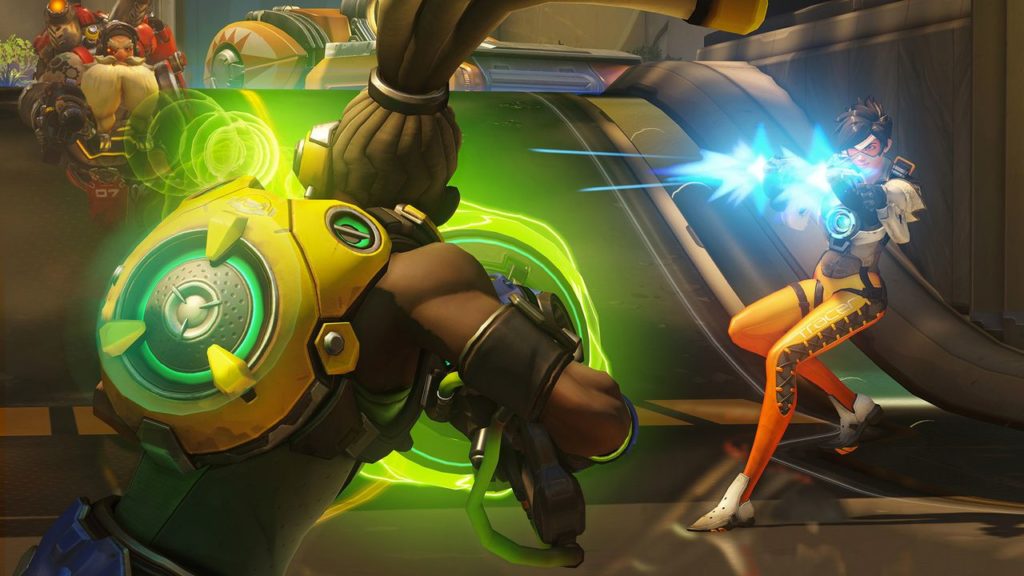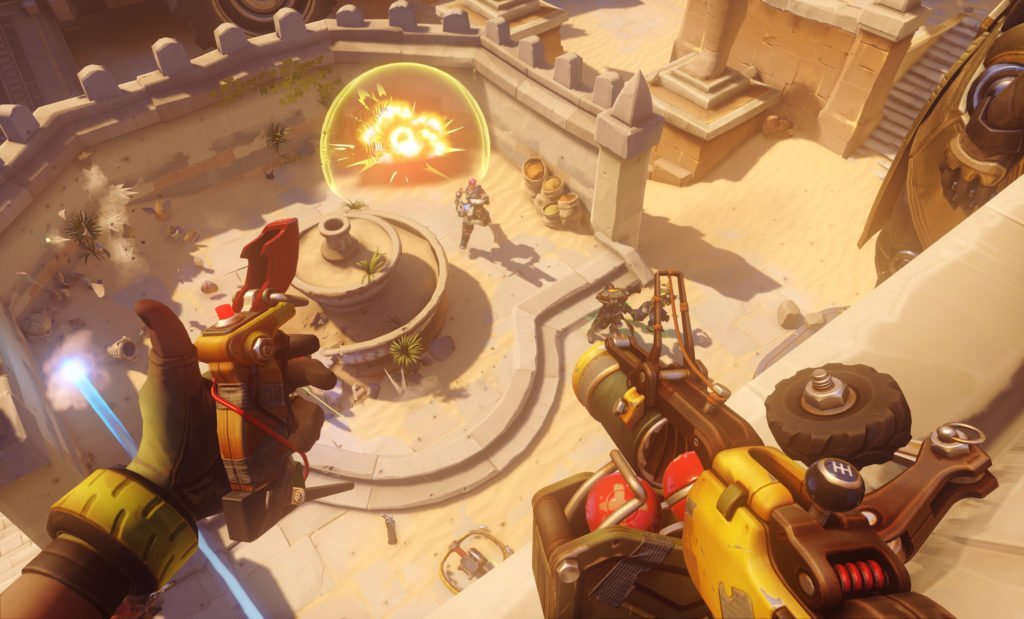It’s been roughly 18 years since Blizzard released a brand new IP. But if Overwatch is any indication, they’ve still got it. The wonderful and whacky cast of characters that make up the world of Overwatch is a breath of fresh air. At least that’s what the first 20 plus hours have been.
I never caught the Overwatch hype bug when it was announced. Nor did I want to watch gameplay footage because of how busy and chaotic the game looked. Yet, simply sitting down and playing the game, I was blown away by the depth of strategy and accountability this seemingly chaotic first-person ‘pseudo MOBA’ actually has.
Overwatch is a first person shooter that changes up the formula by having four distinct character types: damage, tank, builder and support. And even then, all 4 categories have very unique characters that fulfil certain situations when it comes to each game mode, whether it involves escorting a payload, defending locations or taking control points.

Each map has various objectives teams have to contest, making the ability to dynamically switch between characters vital for success. For instance, characters like Reinhardt and D.VA make for an incredible tank with their barriers that soak up bullets for allies. Yet, their lack of maneuverability can be exploited by characters like Tracer and Genji who can easily get behind an enemy line and wreak havoc. This in turn could be countered by builders like Tobjorn and fast moving healers like Lucio who can keep up with the faster paced heroes. Every character can work in tandem with each other for amazing plays and incredible cooperation.
One of my favorite features in Overwatch, heck in games generally, is when characters actually interact with one another. It adds context and helps world-building, especially for a mostly multiplayer first-person shooter. For example, sitting in the pre-round spawn, Mercy pipes up about Mei’s youthful look, “Mei, you haven’t aged a single day. What’s your secret?” to which you could hear her coyly reply “Cryostasis…”. Banter between characters aren’t limited to teammates as well! Some dialogue even prompts from enemy character interactions, such as the sibling rivalry between Hanzo and Genji, especially on opposing teams!
Playing the game on PC, the controls feels extremely responsive, especially with shooting. Aiming is tight, which is pretty hard to say across the board since there are so many different types of weapons for all 21 characters.

Overwatch rewards players for playing a lot and playing well. At the end of each match, you gain experience points. After a certain amount of accumulated points, players will then level up. Each level rewards you with a brand new ‘loot crate’. These loot crates contain 6 different cosmetic items, at least one of which is uncommon-legendary levels of rarity, similar to how Hearthstone does booster packs. These items include character skins, emotes, personal sprays and other little ways to make characters unique.
As the official release comes close, Blizzard continues to polish an already fun and interesting game. As Overwatch hits post release, the developer promises more game modes and various other features are on their way. I wasn’t originally sold on the premise and merely passed it off as another Team Fortress 2. But when I got to really play Overwatch, there’s so much more to it than a simple class-based shooter, it’s a character-based shooter packed with a hell of a lot more fun.
Where Team Fortress 2 was initially a balanced shooter with 9 characters to play between, it quickly spiraled out of control as characters changed their roles. It quickly became a game where anything goes and it doesn’t really matter what you play, as long as you have the items to play it. Overwatch takes this system back to its roots and creates a balanced set of characters without sacrificing options for different play styles.

The ‘Ultimate’ feature in Overwatch for instance lets every character become an extremely useful hero in many cases yet doesn’t compromise their core ‘class’. For a more specific example, Mercy’s Ultimate is an area-of-effect revive around her. This is clearly a support skill, yet can be used defensively to bring back allies or to catch opponents off guard during an aggressive push.
After months of pre-release betas, unfortunately now we will all simply have to wait for May 24 to get more of Blizzard’s latest. The standard edition is priced at $40 USD on PC, while the Origins Edition is available for $60 USD on consoles. For more on Overwatch, as well as more information on our first planned Overwatch tournament later this month, keep checking back right here on Gamespresso.

